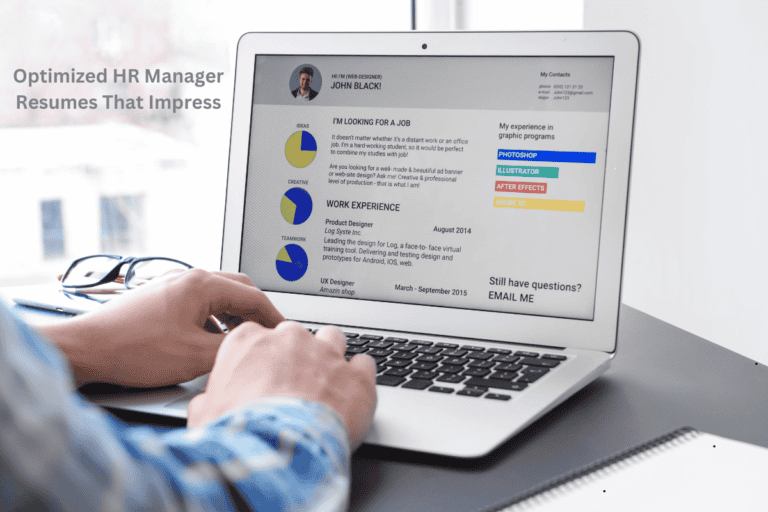Performance Review Tips for Managers: A Comprehensive Guide
Performance reviews are an essential part of effective performance management, providing managers with valuable insights into employee performance and contributing to overall team success. As a manager, conducting performance evaluations can be a daunting task, but with the right approach, it can be a valuable opportunity for growth and development.
In this comprehensive guide, we will delve into the best practices for performance reviews, providing you with the tools and knowledge to conduct effective assessments and foster a positive working relationship with your team. Whether you’re new to performance management or seeking to refine your skills, this guide will equip you with the expertise needed to navigate the performance review process.
Key Takeaways:
- Performance reviews are valuable for assessing employee performance and improving employee-manager relationships.
- The goal of performance reviews is to align staff, communicate expectations, and identify areas for improvement and growth.
- Best practices for conducting effective performance reviews include documenting reviews, being clear and objective in feedback, and scheduling 1:1 meetings for individualized support.
- Documenting employee performance reviews is crucial for measuring progress and identifying development opportunities.
- Providing clear and objective feedback, acknowledging strengths, and using constructive language are key elements of effective performance reviews.
The Goal of Performance Reviews: Aligning Staff and Advancing Performance
Performance reviews play a crucial role in optimizing team productivity and achieving organizational goals. As a manager, the objective of performance reviews is to align your staff with the company’s mission and vision, while also advancing their individual performance. By evaluating their performance, providing feedback, and setting clear expectations, you can foster a culture of continuous improvement and drive employee engagement.
During performance reviews, it is vital to communicate expectations effectively. By clearly defining goals, objectives, and key performance indicators (KPIs), you provide your team with a roadmap for success. This not only helps employees understand what is expected of them but also enables them to align their efforts with the overall strategic direction of the organization. When employees have a clear understanding of their responsibilities and how they contribute to the company’s success, they are more likely to be motivated and perform at their best.
Performance reviews also provide an opportunity to identify and leverage the strengths of your staff members. By recognizing their achievements and talents, you can create a positive work environment that values and nurtures each individual’s unique skills. This acknowledgment not only boosts employee morale but also encourages them to continue excelling in their areas of expertise.
Moreover, the performance review process allows you to uncover training gaps within your team. By identifying areas where employees may need additional support or development, you can allocate appropriate resources to bridge these gaps. Offering relevant training programs, coaching, or mentorship opportunities can enhance their skills and empower them to take on new challenges, ultimately contributing to their growth and the overall success of the team.
Performance reviews are also an effective tool for recognizing and rewarding employee achievements. By acknowledging outstanding performance and providing appropriate incentives, such as salary increases, bonuses, or promotions, you can motivate your staff to continue striving for excellence. This recognition not only boosts employee morale but also reinforces a culture of high performance and achievement within your organization.
Additionally, performance reviews aid in evaluating your team’s composition and structure. By gaining insights into the strengths and weaknesses of each individual, you can make informed decisions regarding team dynamics and structure. This information can guide you in optimizing resource allocation, ensuring that employees are assigned to roles that align with their capabilities and interests. It also helps you identify any gaps in talent, which can inform your hiring and talent acquisition strategies.
Finally, performance reviews provide an opportunity to have meaningful conversations with your employees, fostering open communication and transparency. By engaging in dialogue about their performance, goals, and development aspirations, you can build trust and strengthen the employee-manager relationship. This enables you to provide individualized support and guidance, empowering your team to overcome challenges and reach their full potential.
| Benefits of Performance Reviews for Managers | Benefits of Performance Reviews for Employees |
|---|---|
| Provides an opportunity to communicate expectations and align staff with the company’s mission. | Clear understanding of performance expectations and goals. |
| Identifies strengths and areas for improvement. | Recognition of achievements and talents. |
| Uncover training gaps and allocate appropriate resources for employee development. | Opportunity for skill enhancement and career growth. |
| Recognizes and rewards outstanding performance. | Motivation to continue excelling and striving for excellence. |
| Evaluates team composition and structure. | Alignment of employees’ capabilities and interests with their roles. |
| Facilitates open communication and trust-building between managers and employees. | Personalized support and guidance for overcoming challenges. |
Best Practices for Conducting Effective Performance Reviews
When it comes to conducting performance reviews for managers, following best practices is crucial. These practices ensure that the evaluation process is fair, transparent, and encourages employee growth. Here are some key tips for conducting effective performance reviews:
- Document Reviews: It is essential to document performance reviews meticulously. This documentation helps in tracking employee progress, identifying patterns, and monitoring improvement over time.
- Provide Clear and Objective Feedback: Feedback should be specific, constructive, and measurable. This helps employees understand their strengths, areas for improvement, and the steps they can take to enhance their performance.
- Use Measurable Data and Ratings: Utilize quantifiable data, such as key performance indicators (KPIs) and metrics, to support your feedback. Consider using a rating scale to provide a clear understanding of performance levels.
- Schedule 1:1 Meetings for Individualized Support: Conducting one-on-one meetings allows managers to provide personalized support and guidance. This creates an opportunity for employees to discuss their career aspirations, goals, and any challenges they may be facing.
- Set Clear Performance Criteria: Clearly define the performance expectations and criteria for each role. This clarity helps employees understand what is expected of them and align their efforts accordingly.
- Choose an Appropriate Space for Discussions: Find a comfortable, private space where employees feel at ease discussing their performance. This encourages open and honest conversations.
- Acknowledge Strengths: Don’t solely focus on areas that need improvement. Recognize and acknowledge employee strengths during the review process. This boosts morale and motivation.
- Use Constructive Language: Frame feedback using positive and solution-oriented language. Focus on development opportunities rather than dwelling solely on shortcomings.
- Enable Employee Self-Assessments: Encourage employees to reflect on their own performance and provide self-assessments. This allows for greater ownership and collaboration during the evaluation process.
- Personalize Reviews for Individual Employees: Tailor each performance review to the employee’s specific strengths, goals, and development needs. This demonstrates that their growth and success are valued.
By following these best practices, managers can conduct effective performance reviews that foster employee development, communication, and overall team success.
Innovative companies excel at performance evaluations
| Companies | Performance Review Process | Performance Evaluation for Managers |
|---|---|---|
| Company A | 360-degree feedback system | Employee-driven evaluation |
| Company B | Continuous feedback culture | Ongoing coaching and development |
| Company C | Objective-based performance assessments | Goal-setting and progress tracking |
Documenting Employee Performance Reviews
Documenting employee performance reviews is a critical aspect of the performance management process. It allows managers to measure progress from one review to another, ensure consistency in evaluations, and track employee development over time. By properly documenting reviews, managers can effectively identify areas for improvement and recognize achievements, ultimately contributing to the growth and success of both employees and the organization.
“Proper documentation of employee performance reviews enables managers to identify patterns, track progress, and make informed decisions for employee development and performance improvement.”
When it comes to documenting performance reviews, there are a few key steps to consider:
- Choose a System: Select a reliable system or software to document performance reviews. This can be a performance management platform, such as Leapsome, that offers features specifically designed for this purpose.
- Store Reviews Securely: Establish a secure and organized way to store past performance reviews. This ensures that evaluations, ratings, and areas for improvement can be easily accessed and referred to in future assessments.
- Identify and Build Upon Evaluations: Documenting evaluations, ratings, and areas for improvement is essential for tracking progress. It helps managers identify trends, set goals for future reviews, and tailor development plans to address individual employee needs.
Utilizing a people enablement platform like Leapsome can simplify the documentation process and help managers optimize the performance review cycle. With Leapsome, managers can easily store and access past reviews, track employee development, and streamline the entire performance management process.
| Benefits of Documenting Employee Performance Reviews |
|---|
| Provides a historical record of employee performance and progress |
| Facilitates data-driven decision-making for performance improvement and talent development |
| Supports consistent and fair evaluations across the organization |
| Enables targeted training and development plans to address identified areas for improvement |
Being Clear and Objective in Feedback
When conducting performance reviews, providing clear and objective feedback is crucial to ensure effective communication and meaningful growth. By using simple and clear language, managers can ensure that their feedback is easily understood by the employee. This clarity fosters open dialogue and allows both parties to engage in a constructive conversation about performance.
Another important aspect is making development goals measurable. By setting specific and quantifiable goals, managers can provide employees with clear targets to work towards. This not only helps employees understand expectations but also allows for a more objective evaluation of performance.
Using a rating system and review template also contributes to consistent assessments. Leapsome recommends a 5-point rating system, which provides a balanced scale to evaluate performance. Additionally, leveraging review templates can provide more context and structure to the feedback process, ensuring that all relevant aspects are covered.
Manager’s Feedback Tip: “Being clear and objective in feedback fosters effective communication and creates a roadmap for improvement.”
When managers are clear and objective in their feedback, employees can gain a better understanding of their strengths, areas for improvement, and opportunities for growth. This type of feedback, presented in a straightforward manner, helps employees see the bigger picture and take actionable steps towards their professional development.
Benefits of Clear and Objective Feedback:
- Enhances employee understanding of expectations.
- Facilitates open dialogue and communication.
- Enables employees to set specific, measurable goals.
- Promotes an objective evaluation process.
- Guides employees in their professional development.
Scheduling 1:1 Meetings for Individualized Support
Conducting individualized 1:1 meetings with employees is crucial for providing personalized support. It recognizes that people have different career goals and allows for private conversations about specific goals or struggles. Consistent 1:1 meetings enhance employee support and require clear and collaborative meeting agendas.
When it comes to performance management for managers, scheduling regular 1:1 meetings is an effective way to establish a strong manager-employee relationship and foster open communication. These meetings provide a dedicated space for managers to understand their employees’ needs, challenges, and aspirations.
Meeting with my team members on a regular basis has greatly improved our working relationship. It allows me to understand their individual goals and concerns, and I can provide tailored support to help them succeed. It has made a significant impact on their performance and overall job satisfaction.
During 1:1 meetings, managers can discuss individual goals, provide guidance and feedback, and address any concerns or challenges. These meetings create an opportunity for managers to offer mentorship, career advice, and resources that align with each employee’s developmental needs and aspirations.
Manager performance assessment is also an integral part of the 1:1 meetings. Managers can use these sessions to evaluate their own performance, seek feedback from employees, and identify areas for their own growth and improvement. This self-reflection helps managers continuously enhance their leadership skills and become more effective in supporting their teams.
It is essential for managers to prepare for 1:1 meetings by establishing clear objectives, creating an agenda, and actively listening to their employees. The goal is to create a comfortable and safe environment where employees feel heard, valued, and supported.
Key Benefits of 1:1 Meetings for Managers:
- Build stronger relationships with employees
- Identify and address individual challenges and concerns
- Offer personalized support and guidance
- Align employee goals with organizational objectives
- Enable managers to assess their own performance and seek feedback
| Benefits | Impact on Employee Performance |
|---|---|
| Building trust and rapport | Increases employee engagement and motivation |
| Addressing individual concerns | Reduces job-related stress and improves job satisfaction |
| Providing personalized guidance and support | Enhances skill development and performance improvement |
| Aligning goals and expectations | Improves clarity and focus, leading to higher productivity |
| Facilitating self-reflection and growth | Enables continuous improvement and career advancement |
By prioritizing 1:1 meetings, managers can cultivate a culture of open communication, collaboration, and continuous improvement. These meetings are opportunities to support and empower employees, helping them thrive in their roles and contribute to the success of the organization.
Acknowledging Strengths and Encouraging Growth
When conducting performance reviews as a manager, it is essential to focus not only on areas for improvement but also on acknowledging the strengths and achievements of your employees. Recognizing and appreciating their strengths can lead to increased engagement, motivation, and overall job satisfaction.
Incorporating the acknowledgment of strengths in the review form itself can help set a positive tone for the evaluation process. By including specific questions or prompts related to employees’ strengths, you provide an opportunity for them to showcase their talents and accomplishments.
Additionally, during the performance review discussion, it is crucial to give good ratings and commend employees for their exceptional work. Highlighting their strengths in the conversation validates their efforts and reinforces their value to the team and the organization.
“In every organization, there are areas for improvement, but it’s equally important to celebrate and nurture each employee’s unique strengths, as they contribute to the overall success of the team.”
– Mark Thompson, CEO of ABC Inc.
Furthermore, managers can encourage growth by discussing how employees’ strengths can be transferred to areas that may need improvement. For example, if an employee excels at problem-solving, you can guide them to apply their critical thinking skills to other aspects of their role. This approach promotes the development of well-rounded individuals and encourages continuous learning and improvement.
Another effective strategy to encourage growth is by fostering learning exchanges within the team. Encourage employees to share their strengths, expertise, and success stories with their colleagues. This creates a collaborative environment where everyone can benefit from each other’s knowledge and experiences.
Benefits of Acknowledging Strengths and Encouraging Growth
- Enhanced Morale and Motivation: Recognizing employees’ strengths and achievements boosts their self-confidence and inspires them to continue excelling in their work.
- Increased Engagement: When employees feel valued for their contributions, they become more engaged with their work, resulting in improved productivity and performance.
- Personalized Development: By identifying and leveraging employees’ strengths, managers can tailor development plans and opportunities to help them reach their full potential.
- Cohesive and Collaborative Team: Encouraging learning exchanges within the team fosters a culture of collaboration, where individuals can learn from each other’s strengths and support one another’s growth.
By acknowledging strengths and encouraging growth, managers not only create a positive and empowering work environment but also contribute to the professional development and success of their employees.
Using Constructive Language and Providing Support
In performance reviews, using constructive language is essential for creating a positive and motivating environment. By using language that focuses on growth and improvement, managers can inspire employees to reach their full potential. Constructive language encourages employees to feel aligned, motivated, and empowered, which leads to increased productivity and job satisfaction.
When providing feedback, it’s important to choose words that promote a growth mindset. Instead of using negative or critical language, focus on highlighting areas for improvement in a constructive way. Emphasize the potential for growth and suggest strategies for development.
“Your creative problem-solving skills have been impressive, and I encourage you to continue expanding your knowledge in this area by attending relevant workshops or training courses.”
By framing feedback in a positive manner, managers can inspire employees to embrace challenges and seek opportunities for growth. It’s also crucial to provide support to employees by offering professional development ideas or additional training resources. This helps employees understand that their development is valued and supported by the organization.
Supporting Employee Growth and Improvement
Managers can support employee growth and improvement by:
- Identifying and addressing skill gaps through training programs
- Assigning challenging tasks that allow employees to develop new skills
- Mentoring and coaching employees to enhance their performance
- Recognizing and rewarding progress and achievements
Providing ongoing support and guidance is crucial for employee development. By doing so, managers foster a culture of continuous learning and improvement within the organization.
| Benefits of Using Constructive Language and Providing Support |
|---|
| 1. Improved employee morale and motivation |
| 2. Enhanced employee engagement and job satisfaction |
| 3. Increased productivity and performance |
| 4. Strengthened employee-manager relationships |
| 5. Encouraged employee growth and professional development |
Enabling Employee Self-Assessments for Collaboration
Performance reviews become more effective when employees actively participate in their appraisals. Encouraging employees to prepare self-assessments not only gives them ownership and responsibility for their development but also fosters a collaborative environment where their voices are heard.
Self-assessments provide employees with an opportunity to reflect on their performance, identify their strengths and areas for improvement, and set goals for their professional development. They serve as a valuable tool for managers to gain deeper insights into their employees’ perspectives and gain a holistic understanding of their performance.
When discussing scores and feedback from colleagues and management, it creates an open dialogue that encourages collaboration and enhances performance improvement. This collaborative approach allows employees to share their experiences, challenges, and ideas, leading to more effective problem-solving and innovative thinking within the team.
By enabling employee self-assessments, managers empower their team members to take an active role in their own growth and development. This process not only increases engagement and motivation but also promotes a sense of ownership and accountability for individual and team success.
To facilitate collaboration through self-assessments, managers can:
- Provide clear guidelines and templates for self-assessments
- Encourage self-reflection and honest evaluation of strengths and areas for improvement
- Offer constructive feedback and guidance to support employees in their development journey
- Ensure that self-assessments are considered in the overall performance evaluation process
Employee self-assessments provide a valuable opportunity for managers and employees to bridge the gap between their perceptions and align their expectations. When employees feel heard and involved in the performance review process, it creates a culture of collaboration, trust, and continuous improvement.
Example of a Self-Assessment Template
| Category | Self-Rating (1-5) | Strengths | Areas for Improvement | Goals for Development |
|---|---|---|---|---|
| Communication | 4 | Effective written and verbal communication | Improving active listening skills | Enhance active listening through regular practice and seeking feedback |
| Leadership | 3 | Ability to motivate and inspire team members | Delegating tasks more effectively | Gain additional training and mentorship on delegation skills |
| Problem-Solving | 5 | Strong analytical and critical thinking skills | Improving collaboration in cross-functional teams | Attend workshops on collaborative problem-solving techniques |
Encouraging employees to complete self-assessments and using them as a foundation for performance discussions helps employees take ownership of their growth, fosters collaboration, and leads to greater alignment between employees and managers.
Conclusion
Performance reviews are a crucial aspect of effective managerial practice, allowing managers to assess employee performance, offer constructive feedback, and drive continuous improvement. By implementing best practices in the performance review process, managers can foster employee growth, boost team morale, and enhance overall organizational productivity.
One key aspect of effective performance reviews is the documentation of feedback and performance assessments. By maintaining a record of past reviews, managers can track employee progress and identify areas for development and training needs. Utilizing a people enablement platform like Leapsome can simplify the documentation process and streamline employee development.
In addition, using clear and objective language is essential in providing feedback during performance reviews. Managers should focus on measurable goals, provide specific examples, and offer development opportunities. By acknowledging employee strengths and encouraging growth, managers create an environment that nurtures talent and motivates individuals to reach their full potential.
In summary, performance reviews are a valuable tool for managers to evaluate employee performance, provide targeted feedback, and drive continuous growth. By following best practices, such as documenting reviews, using clear and objective language, and acknowledging employee strengths, managers can conduct impactful performance reviews that contribute to the success and development of both individuals and the team as a whole.







